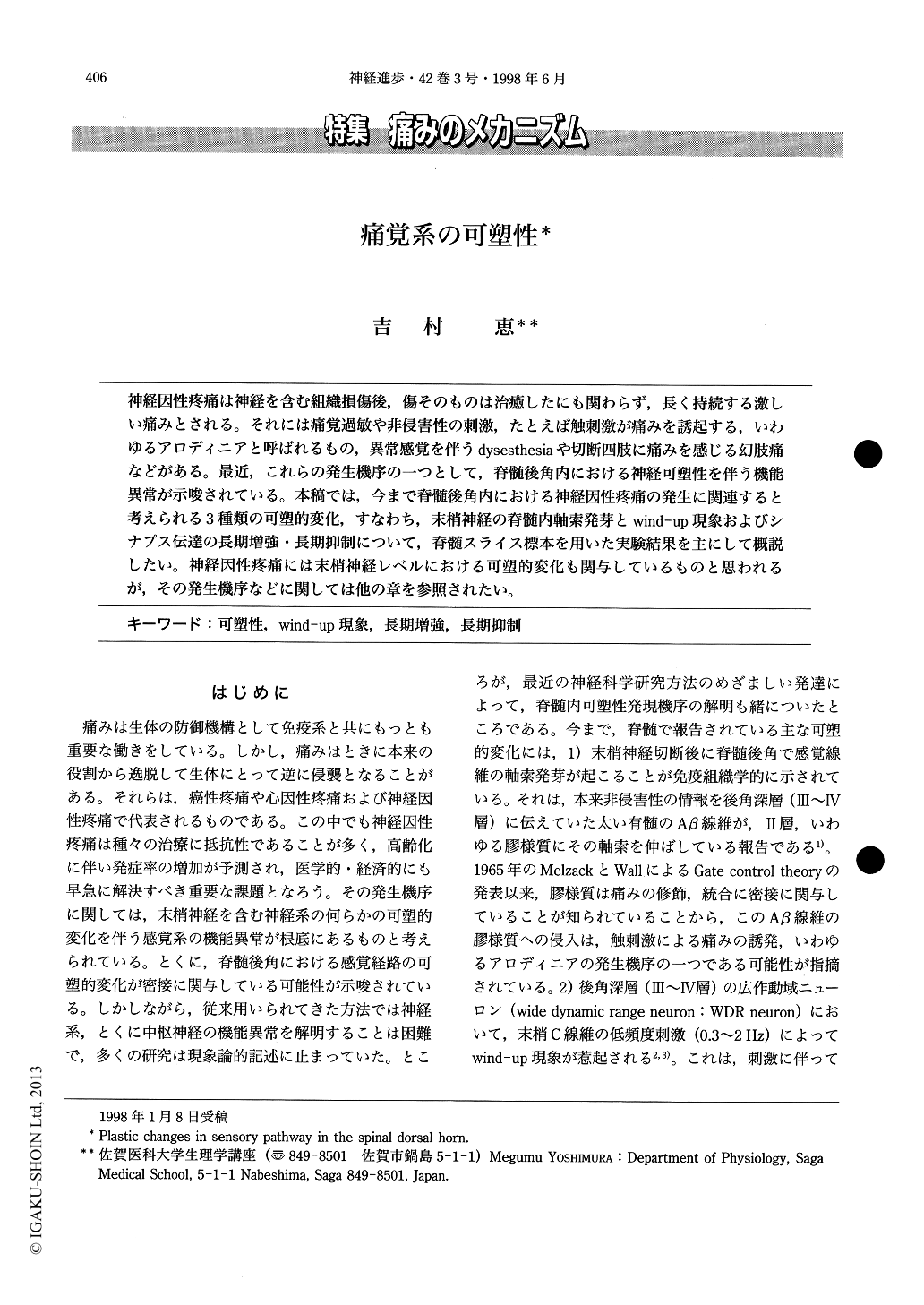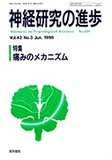Japanese
English
- 有料閲覧
- Abstract 文献概要
- 1ページ目 Look Inside
神経因性疼痛は神経を含む組織損傷後,傷そのものは治癒したにも関わらず,長く持続する激しい痛みとされる。それには痛覚過敏や非侵害性の刺激,たとえば触刺激が痛みを誘起する,いわゆるアロディニアと呼ばれるもの,異常感覚を伴うdysesthesiaや切断四肢に痛みを感じる幻肢痛などがある。最近,これらの発生機序の一つとして,脊髄後角内における神経可塑性を伴う機能異常が示唆されている。本稿では,今まで脊髄後角内における神経因性疼痛の発生に関連すると考えられる3種類の可塑的変化,すなわち,末梢神経の脊髄内軸索発芽とwind-up現象およびシナプス伝達の長期増強・長期抑制について,脊髄スライス標本を用いた実験結果を主にして概説したい。神経因性疼痛には末梢神経レベルにおける可塑的変化も関与しているものと思われるが,その発生機序などに関しては他の章を参照されたい。
Patients with peripheral nerve injuries occasionally suffer from severe chronic pain even after complete healing of damaged tissues. This pain syndrome is classified as neuropathic pain and is resistant in many cases to today's therapeutic strategies. These conditions may be produced by disruption and/or hyperactivity of the neuronal connectivity in the pain sensory system as a consequence of limb amputation or tissue damage.

Copyright © 1998, Igaku-Shoin Ltd. All rights reserved.


